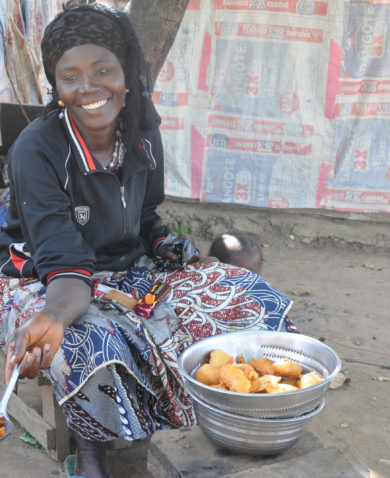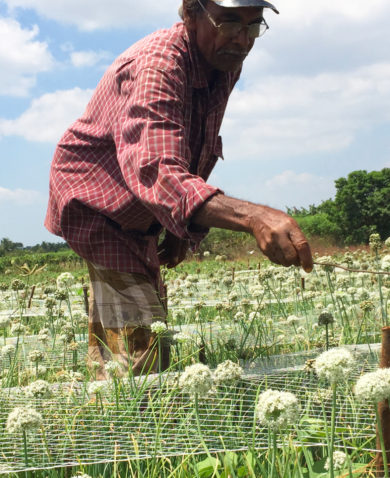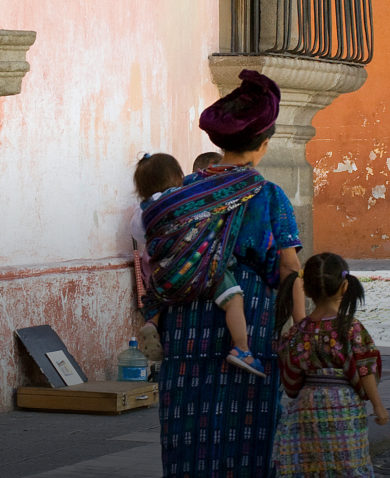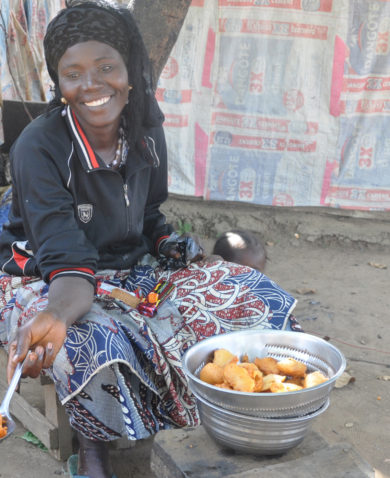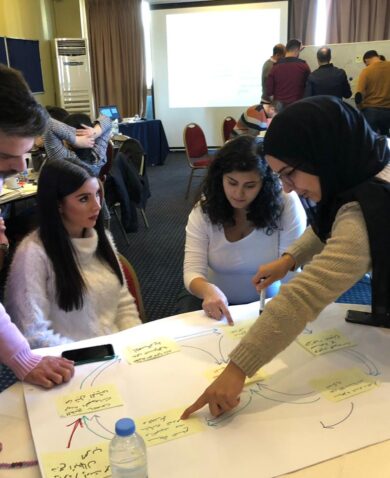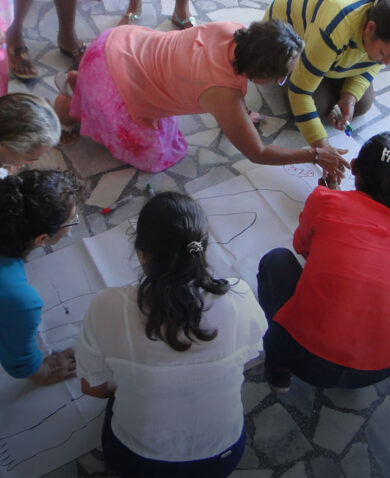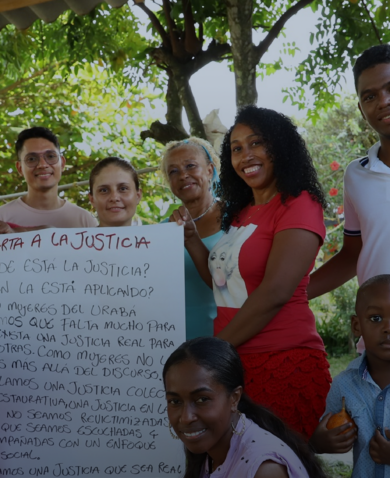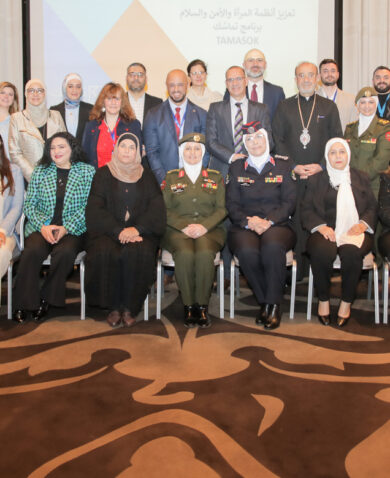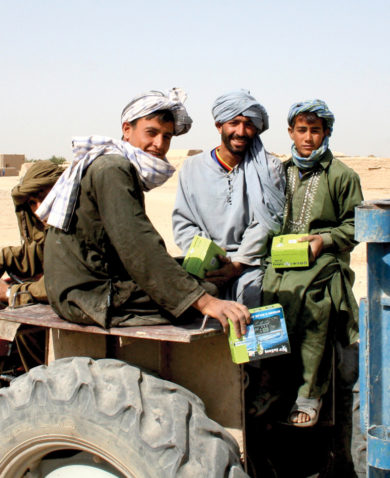
Inclusion: A Critical Element in Effective Approaches to Combatting Violent Extremism
November 2, 2016 | 4 Minute ReadConflict and Crisis director Michele Piercey reflects on how the lack of social inclusion can bolster recruitment for violent extremist groups.
Earlier this year in Mombasa, a youth activist told me he knew plenty of young men who joined Al Shabaab. Many had participated in livelihoods and vocational training activities funded by NGOs. Some even found jobs. Nonetheless, they decided to join the notorious violent extremist organization. This was not the first time that I had heard this, and the situation is not unique to Kenya.
“The mzungu,” he told me, using the local term for a foreign white person, “thinks that it’s only about having food in your stomach, or getting some meaningless job. Really it’s that Shabaab gives you something that you can’t buy.”
“Globally, unemployment is disproportionately high for 18-25 year olds. Factors like climate change, land grabs, and urbanization are worsening these young people’s economic and social marginalization. Many extremist organizations pay a stipend to new recruits, which paves the way for deeper indoctrination. This is one entry point for extremist recruitment. However, there are significant personal costs associated with joining a violent extremist group — physical danger, certainly, but also isolation from family and community networks. It is unlikely that a stipend alone is sufficient incentive for many recruits to make these sacrifices.
So what is it that drives young people to join extremist groups? One of the ringleaders of the Garissa University attack in 2014 that killed 147 students was a trained lawyer and the relatively affluent son of a district chief. This did not surprise my Kenyan acquaintance. As media reports later revealed, the attacker joined the extremist group not for the money, but out of a sense of loyalty to his al Shabaab ‘brothers,’ and in reaction to a burning sense of injustice toward the marginalization faced by Kenyan Muslims.
As my acquaintance suggested, it’s often a sense of belonging to a group supporting a higher ideal, however misguided, that causes young people to risk everything to participate in radical violence. That belonging is what money can’t buy, and it’s a critical element of recruitment for extremist groups.
The Garissa example is another challenge to the popular assumption that the motivation for joining Al Shabaab, Boko Haram in West Africa, or D’aesh in the Middle East and North Africa is financially driven. A sense of belonging, a search for justice, a chance at ‘brotherhood’— those things make up the intangible appeal of joining these organizations.
To be effective, Combatting Violent Extremism (CVE) assistance programs must address this nebulous yet critical element. The sense of belonging that extremist groups offer goes much deeper than economic opportunities. Numerous studies have highlighted the youth identity crisis these groups exploit when targeting recruits. In both the developed and the developing world, answering the question, ‘who am I’ — in relation to the family, the community, and the wider world — is a universal rite of passage. An extremist recruiter might use the initial promise of money as temptation, but what is really being offered through membership is belonging and a path to what’s touted as a meaningful life.
In post-revolutionary states in the aftermath of the Arab Spring; in conflict-affected states of West Africa, and in suburbs of London and Paris, Los Angeles and Minneapolis, the search for inclusion is universal — especially among youth. Islamic radicalism caters directly to that sense of searching for self. In 2014, while in Iraq, I talked with an Arab Islamic civil society leader from Mosul. He had fled to Kurdistan after the Da’esh invasion. Originally, he sought to join them. However, he quickly changed his mind when he witnessed their brutal reality.
“I knew that Da’esh was not good people,” he told me. “But I saw that I might find a way to be part of something bigger than myself.”
The abundance of donor-devised workforce development, economic growth, and job creation initiatives designed to undermine the appeal of extremism makes intuitive sense. Preventing extremist rhetoric from taking hold in the minds and hearts of these vulnerable youth by attending to their basic needs is at least a first step. Meaningful employment could easily be a path to the more fulsome social inclusion that makes irrelevant the appeal of these violent groups.
Yet I do not advocate for blanket ‘inclusion’ programs; siloed CVE programming may also miss the mark if it is too focused on isolating and intervening in the lives of a small, defined group of beneficiaries. Instead, as part of any assistance package, we should support host country communities and governments to offer meaningful paths to inclusion for all citizens.
To do that, I offer the following principles:
1. Prioritize community inclusion activities.
Locally-owned and sustainable development assistance is a best practice in any sector — particularly with CVE programming. Inclusion happens when community members collaborate on project activities through mentoring and sponsoring at-risk youth, finding ways to build mutual understanding and connection, and by supporting the community’s inclusion efforts for their young citizens.
2. Strive for multi-sector interventions.
Single sector initiatives often only address an empirical driver of radicalization and don’t account for the complexity or context of the problem. Sometimes vocational training approaches are found to be ineffective because the training doesn’t align with the local job market. More problematically, these approaches can heighten the sense of exclusion and disconnection that young participants already experience.
3. Be aware of the power of labels.
Informing young people that they are ‘marginalized’ or ‘at risk’ can increase their sense of alienation and exclusion. These labels can also cause host country governments to regard youth with suspicion or as a ‘problem’ to be solved. Far more effective for violent extremism prevention is focusing on engagement between youth and their communities, and the paths to inclusion that host governments, civil society, and youth themselves can create.
In countries where young people struggle to meet even their most basic physical needs, addressing livelihoods or vocational training could be a useful component of engaging those most at risk. In order to present a viable alternative to the extremist recruiting narrative, however, the starting point of any CVE assistance should be fostering the meaningful inclusion of young citizens in their own communities.









